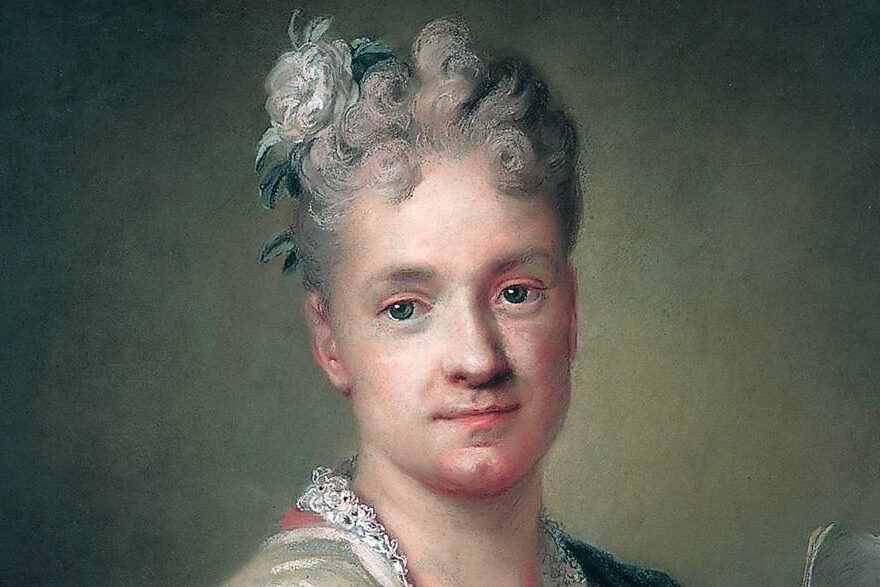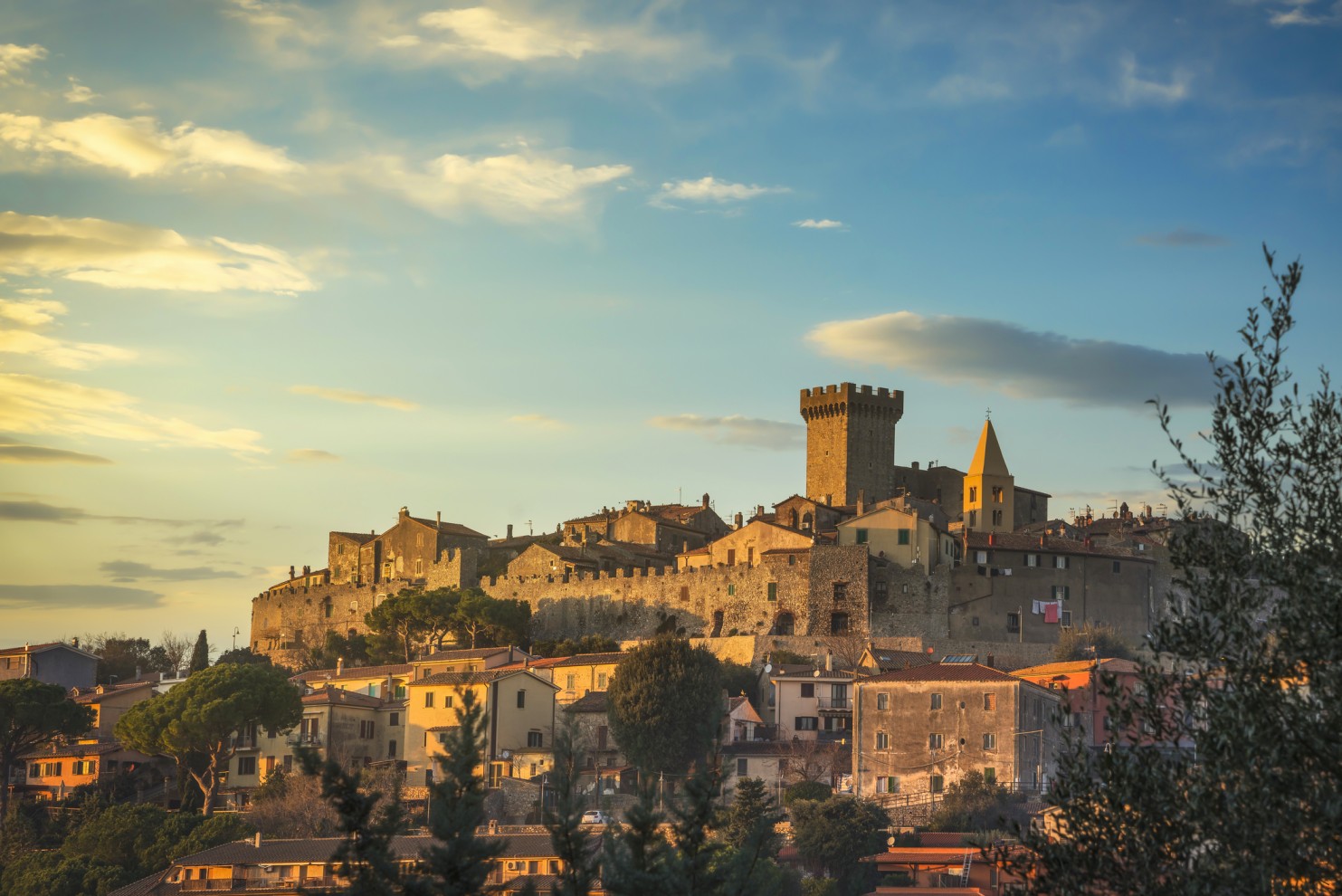Before pasta, there was Lady Salad.
Today we can taste all kinds of spectacular insalatone or large salads, yet the first to prepare raw leafy vegetables drizzled with olive oil and seasoned with salt and cumin were the Ancient Romans.
The root word of salad is sal, the Latin name for salt. And the Latin noun salata (salad) stands for herba salata or salted greens.
In Imperial Rome, Marcus Gavius Apicius, a gourmet and a precursor of the current chefs-writers, wrote the book De Re Coquinaria, a collection of recipes that revealed surprising facts about Roman culinary tastes. Ancient Romans enjoyed lettuces, chicory, and a variety of sprouts, but only at the end of the meal, as ‘third course.” Often, the vegetables were also sprinkled with garum, a fish-based sauce that was a sort of ketchup of the ancient world.
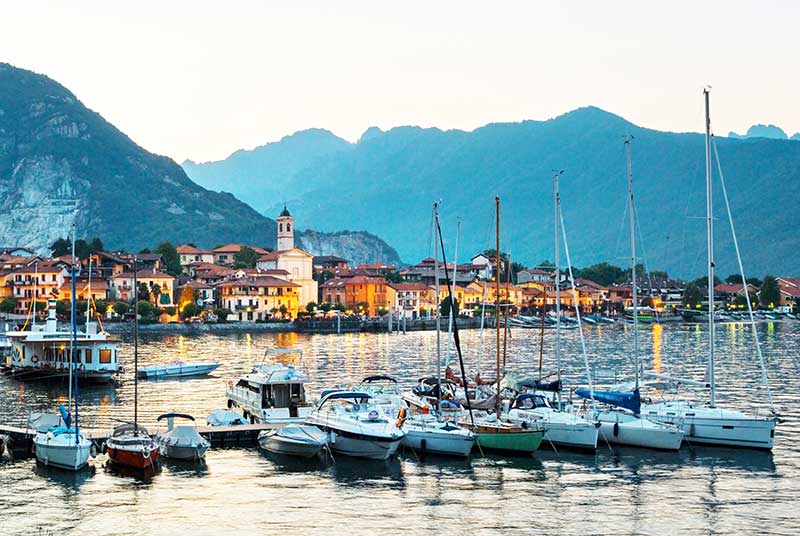
Baveno, on the lake Maggiore was the birth place of the man who created the world famous Caesar Salad (Copyright: Dreamstime)
Roman naturalist and philosopher Pliny the Elder noted that “Among the products of the garden, we especially like vegetables that don’t require cooking and therefore save wood, since they are always ready and available.”
The Romans loved what today we call romaine lettuce, a variety of insalata with sturdy, large and elongated leaves. You can take romaine in any type of salad but the best use of this ingredient is to make Caesar’s Salad.
Its original recipe was not invented by Julius Caesar and has nothing to do with the Romans.
Its creator was Cesare Cardini, an Italian who was born in 1896 in Baveno, a town in northern Italy on the enchanting Lake Maggiore.
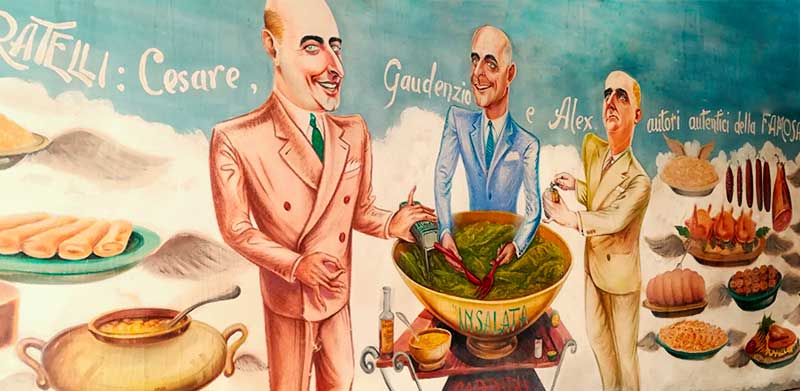
Mural dedicated to the Cardini brothers preparing Caesar’s salad (Copyright Sabrina Cardini)
“Cesare migrated to the Americas with his brother Alex after WWI”, says Sabrina Cardini, the granddaughter of Gaudenzio Cardini, another brother of Cesare who joined the two a few years later–while other siblings remained in Italy.
Cesare invented the iconic salad in 1924 in his restaurant in Tijuana, Mexico, located on the Avenida Revoluciòn.
Sabrina, a resident of Baveno, says that one day Cesare and Alex found themselves low on provision but with hungry guests to feed. “They were running low on ingredients that usually came from Italy,” she explains. “To solve the problem, they had to create something alternative, with the few ingredients left in the kitchen. They used their creativity.”
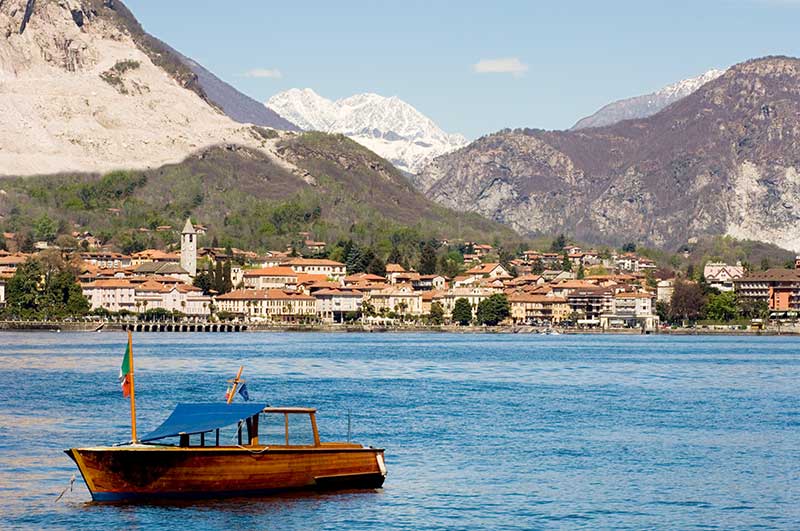
Another scenic view of Baveno, embraced by the Alps (Copyright: Archivio Città di Baveno)
The original recipe includes romaine, garlic, croutons, Parmesan cheese, olive oil, Worcestershire sauce, and raw eggs.
Yes, that is correct: raw eggs.
“Even later, when clients ordered the salad, Cesare himself rolled the big cart up to their table, tossed the romaine lettuce in a wooden bowl and the clients could see him breaking two eggs yolks over the lettuce and rolled them in, and the greens going all creamy,” she says.
According to the New York Times, there are some disagreements over the details of the story.
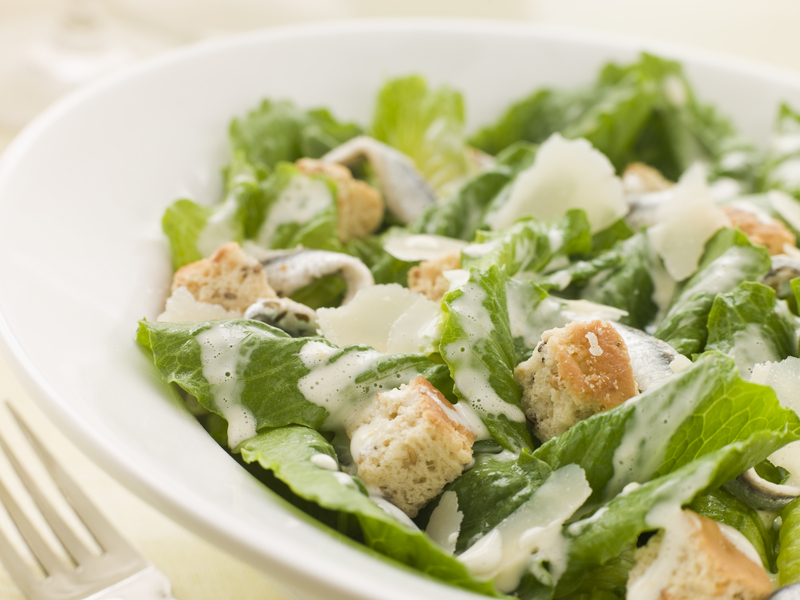
Caesar Salad
Cesare registered the patent in the 1940s. In the meantime, the recipe became so popular that in the 1930s, Caesar’s Salad was voted by the master chefs of the International Society of Epicures in Paris as the “greatest recipe to originate from the Americas in fifty years.”
It became fashionable among Hollywood celebrities as Cesare opened restaurants, hotels, and bars in Sacramento, San Diego, and Hollywood. Cesare married musician Camille D. Stump in Santa Ana and the couple had one daughter, Rosa Cardini.
Cesare produced and marketed his salad dressing, and after his death in 1956 — he was buried at Inglewood Park Cemetery— his daughter Rosa took control of Cardini Food Inc. According to Sabrina, Rosa added anchovies in the salad dressing.
Rosa died at 75 in 2003.
Sabrina shows me a beautiful painting from a Mexican artist who portrayed the three brothers Cardini busy preparing the iconic salad, that Sabrina keeps calling the Cardini Salad. The Cardinis were a family of restaurateurs. Sabrina’s father, Giacomo, together with his father Gaudenzio had a successful restaurant in Mexico City. “Then they wanted to return to Italy,” she says.
“In Baveno, my father opened the Bar Acapulco, which remained in business until 1989.”
Baveno is a town of 5.000 souls in the province of Verbano-Cusio-Ossola. Of Roman origin, it enjoys breathtaking vistas on the Borromean Islands, gardens of Isola Bella and Isola Madre, and beyond to the Alps. “It is a peaceful town rich in human-scale spaces. It is soothing and relaxing and the quality of life is very high,” says the mayor of Baveno, Maria Rosa Gnocchi.
The ancient Parish Church of Santi Gervaso and Protaso with its nearby baptistery is worth a visit.
Baveno is dotted with gorgeous mansions such as Villa Henfrey-Branca, owned by the Branca family, historical producer of Fernet-Branca, an amaro invented in 1845 in Milan. Other stunning villas include Villa Fedora, where opera composer Umberto Giordano composed Fedora, Villa Gavazzeni and Villa Barberis.
“A destination in the years of the Grand Tour, Baveno today is an ideal base for discovering both Lombardy and Piedmont,” says Gnocchi. “Malpensa airport is 40 minutes away and we have also a rail connection with Geneva, Switzerland.”
The town is renowned for its quarries of fine pink granite which has been employed for buildings around the world such as the Basilica of St. Paul Outside the Walls in Rome, the monument to Christopher Columbus in New York and the Royal Palace of Bangkok.




